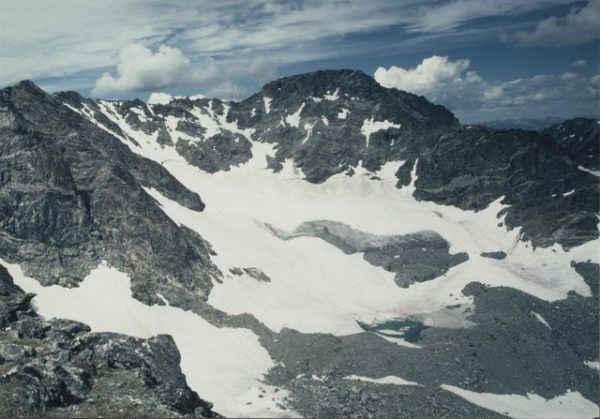
When you picture a glacier, you probably imagine the Arctic. In fact, about 10% of the world’s total land area contains glaciers, and we have glaciers right here in Colorado. These awe-inspiring masses of snow and ice are constantly moving and changing due to fluctuations in climate and temperature, and they can yield important data about our planet’s past and future.
So, what is a glacier? Glaciers form when snow accumulates over many years and compacts into large masses of ice. Many of them, especially those around the Arctic and in Antarctica, have been around since the last Ice Age. The weight of the glaciers causes them to move and flow. Glaciers also continually retreat or advance based on climatic conditions such as snowfall amounts or evaporation. In recent years, the effect of global climate change on glaciers has been of special interest to scientists.
The National Snow and Ice Data Center (NSIDC) at the University of Colorado has been studying glaciers since 1976. Anyone looking to learn about glaciers will find a variety of resources on NSIDC’s website. The “All About Glaciers” section of their site provides an introduction to understanding glaciers, including how they form, why they move, where they are located, how they affect people and land, and how climate change is affecting glaciers. The website also offers more in-depth information including data, links to scientific publications, and a blog. One of the most interesting features of their website, however, is the Glacier Photograph Collection, a searchable database of over 15,000 photographs of glaciers. Accessible to the public, “these photographs constitute an important historical record, as well as a data collection of interest to those studying the response of glaciers to climate change,” notes NSIDC.
The State Publications Library collection includes many reports and publications from NSIDC, such as Glaciers and the Changing Earth System. For more resources, search the library’s online catalog.
- How to Spot the Differences Between Eagles and Hawks - August 16, 2021
- How Transportation Projects Help Tell the Story of Colorado’s Past - August 9, 2021
- Time Machine Tuesday: The Night the Castlewood Canyon Dam Gave Way - August 3, 2021